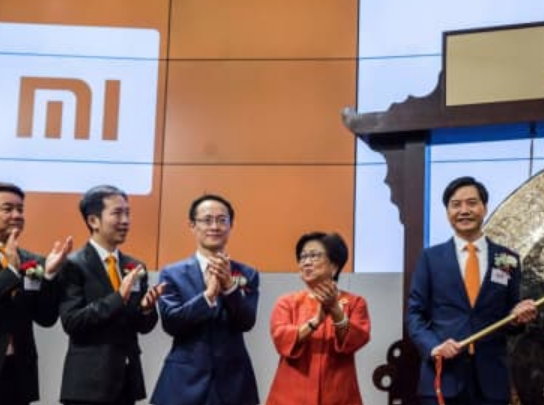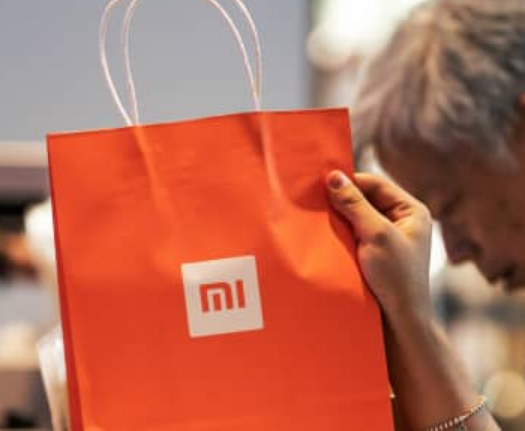Xiaomi's revenue surges nearly 70 percent in the second quarter as smartphone growth remains strong

Isaac Lawrence | AFP | Getty Images
Chinese electronics giant Xiaomi reported second-quarter earnings on Wednesday that beat expectations amid pressure on its share price and questions over its long-term business model.
It's the first time Xiaomi has released results as a public company after its initial public offering (IPO) in July.
Here's how the company did:
Revenue hit 45.24 billion yuan ($6.60 billion) compared to expectations of of 39.18 billion yuan, according to analysts surveyed by Thomson Reuters. That represented 68.3 percent year-on-year rise.
Operating profit loss of of 7.5 billion yuan.
Net profit of 14.63 billion yuan, from a loss of 7.03 billion yuan in the first quarter of 2018.
Shares of Hong Kong-listed Xiaomi are up 4 percent since the company went public in July. The shares were higher going into the earnings report and were above the IPO price of 17 Hong Kong dollars after dipping below it and hitting a record low last week. Still shares of the Chinese technology firm are around 18 percent of the its record high close of 21.55 Hong Kong dollars on July 18.
Smartphone revenues raked in 30.5 billion yuan in revenue for the second quarter, a 58.7 percent year-on-year rise, despite the overall handset market declining. Xiaomi said that the average selling price of devices rose too. In its earning statement, the technology firm said that the Chinese smartphone market is in a "period of recalibration" but its focus is on expanding into the high-end segment.
Xiaomi has grown by creating mid-to-low-priced devices with high specs. But it needs to expand into higher priced devices in order to boost revenues.
"We believe our strategic focus to further penetrate the high-end smartphone market by optimizing our product portfolio in 2018 will lay the groundwork for further shipment unit growth in China in 2019," Xiaomi said in a release.
Analysts are concerned that Xiaomi could struggle to diversify its business away from hardware, which is a low margin business. Smartphones account for around 70 percent of Xiaomi's revenues, while other products such as TVs are another 20 percent. Under 10 percent of revenues come from its internet services business which include its music streaming product.
Xiaomi is one of the world's biggest smartphone makers but it is facing intense competition from other Chinese players like Oppo, Vivo and Huawei who are offering high quality devices at low prices. In the high-end it could face pressure from Apple as well.
Connected device sales rise
Xiaomi continued growing emerging areas of its business with internet of things and lifestyle product segment grew 104.3 percent year-on-year, bringing in 10.4 billion yuan in revenues in the second quarter. This unit includes TVs and the company's virtual reality headsets.
Internet services revenues were up 63.6 percent year-on-year to 4 billion yuan in the three months to June. This includes revenues from areas such as advertising and Xiaomi's music streaming product. Still, internet services only contributed 9 percent of revenue, which could worry investors who are concerned that Xiaomi relies too heavily on smartphones.
Xiaomi has typically been reliant on China for making money, but it said that international revenue grew 151.7 percent year-on-year to 16.4 billion yuan, accounting for 36.3 percent of total revenue. A large part of this was thanks to strong growth in India, where it is one of the biggest players, and continued expansion into Europe.
在线留言询价
- 一周热料
- 紧缺物料秒杀
| 型号 | 品牌 | 询价 |
|---|---|---|
| MC33074DR2G | onsemi | |
| CDZVT2R20B | ROHM Semiconductor | |
| RB751G-40T2R | ROHM Semiconductor | |
| TL431ACLPR | Texas Instruments | |
| BD71847AMWV-E2 | ROHM Semiconductor |
| 型号 | 品牌 | 抢购 |
|---|---|---|
| STM32F429IGT6 | STMicroelectronics | |
| IPZ40N04S5L4R8ATMA1 | Infineon Technologies | |
| ESR03EZPJ151 | ROHM Semiconductor | |
| BU33JA2MNVX-CTL | ROHM Semiconductor | |
| TPS63050YFFR | Texas Instruments | |
| BP3621 | ROHM Semiconductor |
- 周排行榜
- 月排行榜
AMEYA360公众号二维码
识别二维码,即可关注


























